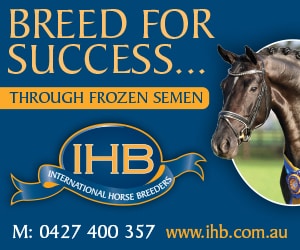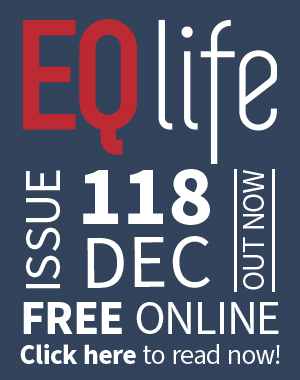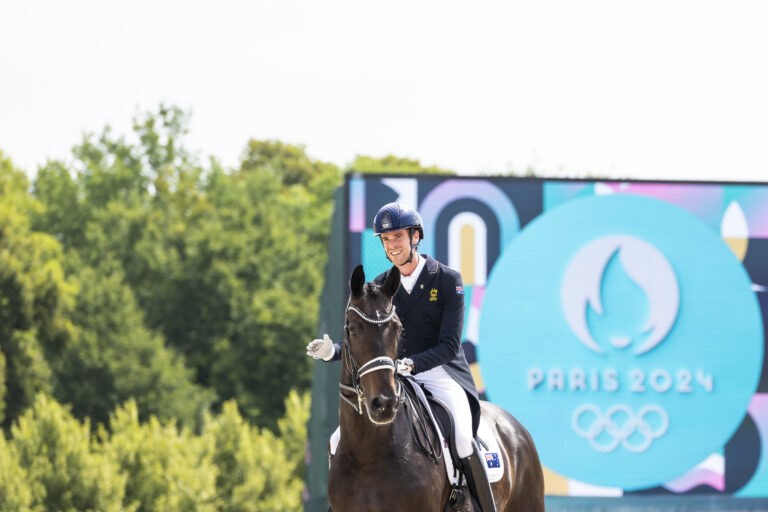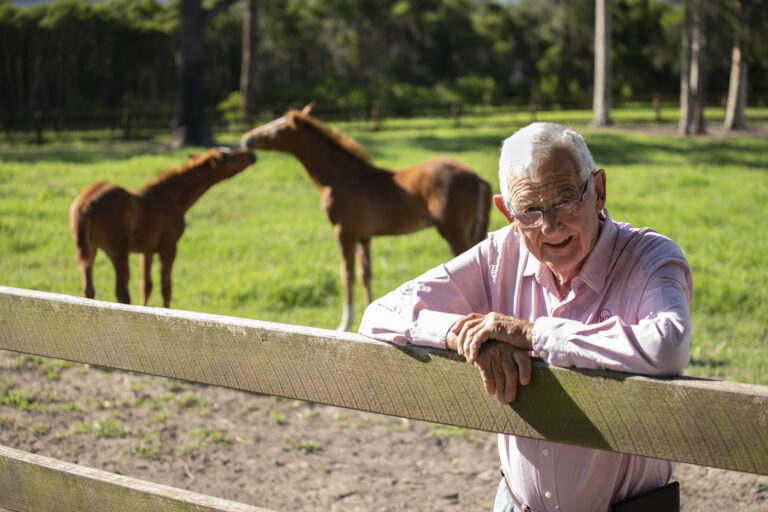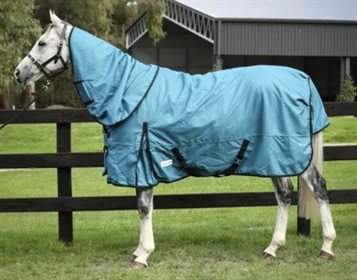© JA Photographics
By Jane O’Connor
When we think of basic or beginner riding lessons, the picture tends to be one of children and teenagers learning the ropes. But, today’s horse owning demographic paints a vastly different picture. The number of adults, mainly women, turning to riding is booming.
Local adult riding groups no longer sit as just an isolated bunch of horse owners looking for a sociable and like-minded outlet for their interest. Such has been the growth in adult riding that in Victoria alone, more than 5600 in that state are now affiliated to the Horse Riding Clubs Association of Victoria (HRCAV) and other states are adopting their model.
The majority of these riders are adult women either returning to riding after marrying and having children or as a stress reliever from busy professional careers. They are forming the lifeblood for riding instructors, are the wider equine industry’s main consumer group and make up a fair percentage of the audiences for major events.
But, the question is whether this rapidly growing group has access to the types of skills and services that cater to their needs. To examine this, we asked instructors and industry observers for their take on what this demograph means. There was general consensus that the growth in lifestyle properties – the spread of urban fringes into previously rural areas – had provided the means for much of this new horse ownership. That and available agistment within travelling distance. There was also agreement that the majority of adult riders have little or no rural knowledge, so their learning needs require a return to basics in order to not only retain industry skills, but to raise the bar on across-the-board equine knowledge.
To delve into why this significant group has come about, Sue Williams, President of HRCAV, says that in 1981 a movement began with informal discussions among six adult riding groups to look at the possibility of forming an association. “Some of the objectives seen as important at this time were improved communication between clubs, working to make horse riding and competition more enjoyable, and the promotion and pride of belonging to a member’s own club. Following these discussions, a draft Constitution was prepared and circulated to riding clubs. As a result, the Horse Riding Clubs Association of Victoria came into being at a general meeting of riding clubs held later in 1981, where a Constitution for the Association was formed,” Sue says. But, they were off and running within a year. Today, there are around 225 affiliated clubs in Victoria alone and such is the growth, the association employs a full time office manager and three other staff.
Although the association has six official disciplines – Dressage, Show Jumping, Horse Trials, Combined Training, Showing and Navigation Rides – member clubs are not boxed in to these. “Lifestyle is a very big part of it,” Sue says. “Many members are in it for leisure and pleasure – there are some clubs that just want to go trail riding.” The key, even in their competitions, is that there is no pressure. An annual Top Teams Trophy is held for each of the disciplines. These events are hosted by one or co-hosted by two or more HRCAV clubs and the best patronised event is Dressage with up to 700 riders competing over one weekend.
Sue herself is typical of the demographic. “I was very horsey when I was young and got out of it when I had children. I have a daughter who is horse mad and we gave in and bought her a horse that was agisted. I got sick of walking the tracks with her and got back into it myself,” she says.
Sue has seen it boom, particularly in geographic areas with high levels of per capita horse ownership, such as the Yarra Valley, Mornington Peninsula and Gippsland. In the past few years, she says, the growth rate has been at its highest level ever. “People are more aware that we’re around and they are looking for an alternative. They can bring young horses in and there’s no pressure on them to perform at certain levels,” she says. “It’s all a lot of them want to do – have fun without the pressure.” The diversity among individual clubs is also extremely wide, as are their levels of expertise and interest. An individual can be a member of as many clubs as they like if they cater for their particular interests. Some clubs allow juniors, while others don’t. Some encourage family groups. They are also spreading knowledge and expanding the type of training available. The association’s breakdown shows that 92 per cent are adult females, with the rest made up of adult males and a smaller number of juniors. The professions most interested have also started to emerge, with mainly female police, teachers and education employees, nurses and doctors highly represented. “It’s a very good stress relief activity,” Sue says. It is also regarded as highly sociable, with attention paid to the social side as well.
Individuals and clubs are organising more seminars on subjects such as small property management or basic horsekeeping. “These are as popular as all get out,” Sue says. Through group sharing they aim to spread knowledge. The HRCAV efforts have now spread into NSW and they have put together a new clubs pack for groups on how to become a club. South Australia, Western Australia and Queensland have asked for the packs. The association also runs training sessions for officials, judges and course designers. It is the one area they particularly need assistance with. A small number of volunteer officials currently carry a high workload. “What we’d love to see is more experienced people running judging training days. We particularly need people to lend a hand in Dressage and Jumping,” Sue says.
Instructors and industry participants see this influx as a good thing for the equestrian sector generally, given the demand for education, the raft of services that accompany horse ownership, the companies that provide infra-structure, nutrition, clothing, veterinary, farrier and saddlery services, not to mention those all important bums on seats for events, shows and demonstrations. But, this is not the same as buying a pair of bushwalking boots or a tennis racquet. The hobby requires a large animal and their needs in a domesticated environment are enormous.
Some industry participants are questioning whether enough attention is being paid to this growing sector in terms of providing the most basic, on-ground skills. Is it a case where we can watch some great national and international horsemen and women strut their very skilled stuff in an arena and take in the latest trendy approaches? But, the beginner or the returning adult rider may have acquired a ‘ready made horse’, but has little idea about its basic handling. These are the old fashioned, well entrenched, ‘rural’ skills that have been part and parcel of farming families and equine-related industries for generations. There were stock horses for the muster, but as a sideline, the family would try Hunting, Endurance, Polo, a range of country show competition disciplines, or rodeo and western pursuits. Their horsemanship was not one-dimensional.
A passionate observer of the changing demographic is Warwick Morgan. As the son of Australia’s first equestrian Olympic Gold Medal winner, Laurie Morgan, Warwick was born around horses. Not only an equine dentist, Warwick also gives private lessons at his Northern Tasmanian property and guest lessons on the mainland. His father was a much-admired pioneer when it came to placing Australia on the global map when he not only won the individual Eventing Gold at the 1960 Rome Olympics, but a second Gold in the team event at the age of 42. Laurie’s mount, ‘Salad Days’, was a horse he found while buying sheep off a drought stricken property with Warwick in tow. No pampered ‘show pony’, the family would jump on him for a bush ride or to chase kangaroos out of the paddocks. But, he turned out to be a ‘freak of a horse’ that excelled at whatever he was aimed at.
Warwick has written a book about his father’s remarkable record (‘Too Tough To Lose’. See Rewind on Page 110). When asked about the differences he has observed over the years, Warwick says one of the main ones is ‘that very few riders seem to be able to ride outside of an arena now’. “Today, we have become so European in our riding. In my father’s day, we didn’t know what Dressage was. Country people didn’t,” he says. Warwick’s formative era was one where the horses had to work as well as take part in competitions. For 25 years, the Morgans raised cattle – post-Olympics – in the Northern Territory. Before and after the Olympics, the family lived in England where Laurie rode at Badminton and a range of other competitions, plus fulfilled ambitions such as riding in steeplechases. He won 22 of 33 starts as an amateur jockey. Warwick took to Eventing and Show Jumping and played a lot of Polo, when he wasn’t mustering sheep and cattle. They had also bred Thoroughbreds.
So, is it a case of nostalgia failing to give way to what many would see as progress? Warwick has taught at more than his share of pony clubs, but says he will no longer do so. He has groups of private adult students – ‘mostly mothers who are quite nervous about getting back into it’. Most, he says, want to ride for pleasure and what they need the most are very basic skills. “Australia is a lucky country in terms of horse ownership. You can be on unemployment benefits and own a horse. Everywhere else in the world it is an extremely elitist pursuit. It has become exhorbitant to have elite horses,” Warwick says. In his pony club sessions, he would ask parents why they had bought their young daughter a horse. He asks it of his private student’s parents today and of the adult riders too. The most common answer is because their parents wouldn’t let them have one. “It is a complete indulgence in a lot of cases and this is what is happening in general.” Most of the parents also have no background with horses. Because of this they are less likely to question what is – or should be – taught at pony club level.
The first, formative pony clubs, he says, were ‘a brilliant idea’, but the question is whether they have changed to suit the realities of today’s demographic. “Very few that I have seen come along with a ‘green’ horse can get it going. These kids get a ‘made’ pony and I don’t believe you can ever become a good rider that way. I find it really sad,” Warwick says. Many of the pony club parents, he says, have also become adult riders and pick up what is taught at that level, but don’t have the expertise to question it. Many are drafted in themselves as instructors and helpers. Another development Warwick bemoans is the tendency to adopt ‘trendy’ training methods or a ‘showbusiness approach’ to horse skills. “These are more of a show to get the public enthusiastic, but they don’t display general, all-round horsemanship.” The thumping reality is that today’s liability issues and safety requirements have made what’s able to be offered restrictive.
Warwick has applied different techniques to his adult riders. A defining feature – particularly among mothers – is nervousness. They want to feel safe and in balance because with children to care for, they have lost that daredevil approach to a bush ride or aiming at a challenging fence. Warwick combines the Alexander Technique – a method of helping people unlearn bad physical habits and return to a poised and balanced state – with basic riding lessons for adults.
Another industry veteran is Carl O’Dwyer (see article Page 48). With horses in their blood for generations, Carl sniffed the changing demographic breeze back in the 1980s. He watched as Melbourne’s suburbs rolled towards him in Kilmore. Having been in business for 49 years and now with son, Dan, running an expanded operation, what strikes him most is the very basic nature of the education today’s customers need and are asking for. These lifestyle ‘newcomers’ ‘haven’t learned the basic skills of owning a horse’. Carl believes providing the basics in an educational and accessible way will be attractive and sought after. This goes right down to knowing how to talk to a farrier or realising that you can’t test a saddle before you buy it on the internet. A major area lies in their ability to handle a horse float. Sue agrees and says some individual clubs with the expertise are running sessions such as float driving and safety. Carl too refers to the ease with which we can acquire a horse, suggesting ‘it is not a right, it’s a privilege.’ He sees part of the solution as educating people to learn the basics before they buy the horse. Respect for expert advice is maintained and the bar is lifted on our general horse knowledge.
Paul Clarkson is a breaker and trainer and a competitor in ‘The Way of The Horse’. He too is a farm boy who grew up around horses in the Hunter Valley. Paul’s reality is that most of his ‘target audience’ are adult women riders who need to be given the confidence to ride again or start from scratch. “I am going right back to basics with these students. These are mainly people who just want to have fun and feel safe,” Paul says. Apart from the basics, Paul says, the realities of the horse-human relationship also needs to be taught. “If you have got a horse out in the paddock, how often do you see it jumping things on its own, just for fun? The horse is a beast of burden. You are asking it to carry you and do what you want. It comes down to why we are riding and what an individual is looking for out of it.” Without these inherent rural skills, then unless we teach them we are losing those skills, he says. “The demographic has changed from farming to lifestyle.”
Paul says he has also avoided teaching at pony clubs because he ‘disagrees with so many of their rules’. Some of his training methods are seen as dangerous, such as starting a chainsaw around a horse. This would not be uncommon among farming folk, but Paul’s point is to show his students what would potentially put them in peril. “If they’re out on a bush ride, how would they cope if a bunch of dirt bikes suddenly came their way?”
Asked whether some of the ‘showbusiness’ approaches to equestrian pursuits are a plus or a minus, Paul says that they do bring people into the industry. But, one of the more confusing aspects for newcomers becomes the incredible range of choices. For example, the mainstream, entrenched horse industry can debate at length whether to keep a horse barefoot or have it shod and what are the implications, does one or the other suit every horse and how do you find out? The same applies to nutrition, veterinary treatments and the list goes on. “There can be a fine line between keeping people engaged, but bringing them back to reality.” The growth – or otherwise – of various disciplines is also reflecting the new demographic. Western disciplines are booming and Paul puts this down to the fact that they are family fun, provide a rush ‘and it’s a lot cheaper to produce a camp drafting horse than a Dressage one’.
Adult riding is also extremely sociable. He too asks them why they want to ride. “They either missed out on having a horse when they were young or have fond memories of a time when they did have a horse, but career, marriage and kids ended that. Now they have the chance to get back into it,” he says. And, while more elite levels of riding may dismiss this as ‘the leisure and pleasure’ brigade, the reality is that this demographic will lead on some of the key issues the overall industry faces. Animal welfare is a case in point. Paul says it is an enormous subject among these riders. “I have first time riders who are worried about actually sitting on the horse because of what it might do to the horse,” he says. Warwick Morgan concurs and says today’s equine audiences are starting to show their displeasure at techniques they believe are less than humane.
A young, married woman with two children, Fiona Johnson, could be said to have potentially been typical of the little girl who hankered after a pony. The hitch was her parents had no horse knowledge and they lived in the Sydney suburbs. But, indulge her they did. Fiona dived into pony club from age eight and was in full on competition to 18. Education, career and then marriage saw the beloved horse sold. But, Fiona (see Against The Odds on page 34), had the benefit of being ‘adopted’ by some very seasoned trainers – the type of people who did everything from showing to Rodeo and breaking and training. She could keep up her interest by riding their horses and it meant having to ride a diverse range. But, she switched from intermediate level Dressage to become a Rodeo champion after she was married. Fiona is now a qualified riding instructor and again, her students are a mixture of children and adults. Fiona’s students mainly come via word of mouth and are mostly beginners. “They just want to learn to ride and they want really basic things. We start by observing the horse,” she says. That’s more to do with standing beside it than the usual desire of ‘when can we canter’. She also offers advice on buying a horse to suit the individual need. Often, novice riders will turn up with a horse that looks good, but is well beyond their capacity to handle. Fiona teaches how to train their horse well, whether their interest is in barrel racing, Dressage or just a trail ride. One of the most common questions she is asked is ‘can you fix it (the horse) for me’. And yes, in many instances the syndrome of little girls and horses that ultimately fizzles out is still a common scenario. But, Fiona says, that romantic notion comes with a lot of new adult riders as well.
For further information visit www.hrcav.com.au
READ THE LATEST NEWS ARTICLES HERE




